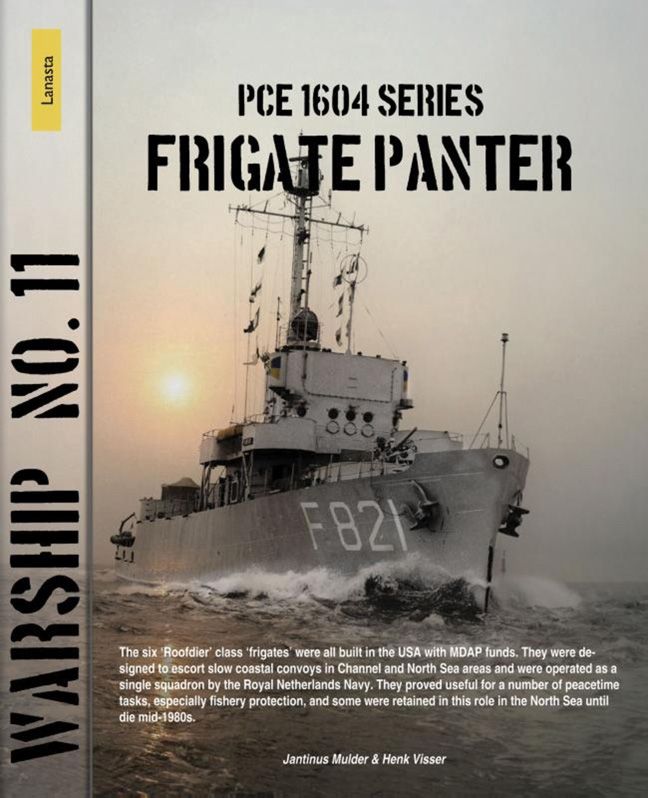Book contents
Introduction
Published online by Cambridge University Press: 27 March 2024
Summary
Between 1954 and 1984 the Royal Netherlands Navy operated six small frigates that were built as Patrol Vessel, Escort (PCE) in the United States. The ships did serve mainly in the North Sea in an unique branch of the military responsible for an array of maritime duties, from ensuring safe and lawful commerce to performing rescue missions in severe conditions.
The six escort ships were of the PCE 1604 series. A forthcoming design of the PCE 842 class (Admirable class) of World War Two.
Coat of arms
The badge of frigate Panter was assigned in 1955. An azure panther of gold, spotted of sable and tongued with throat, on a base of gold. A Latin motto: ‘Semper Invicta’ (Always Invincible) with golden letters on an azure banner.
Ships type
Classification of the US PCE = Patrol Vessel Escort (180’)= * by the Dutch navy. The ships of the “Wolf-class” were also called: “Roofdierklasse”( Beast of Prey class). Although displacement and dimensions of a corvette the navy classified the class as frigates. In Dutch language they often were referred to as “fregatjes” = small frigates… In later Jane’s Fighting Ships editions they were indicated as corvettes.
Ancestors of the Pce
Auk class
When the U.S.A. was drawn into the Second World War, a crash program of naval construction followed. Including minesweepers with diesel-electric propulsion as alternative to a geared diesel drive. When not engaged in sweeping, the generators could be utilized to provide additional power for the propulsion electric motors and therefore boosted its speed. This significant innovation was incorporated into the Auk class and permitted considerable operational flexibility at little extra cost except for a slight increase in displacement. The United States Navy was particularly fortunate in that it was backed by the industrial capacity to install diesel- electric propulsion on a large scale, and therefore was not inhibited in its approach to an optimum design.
Admirable class
The ships of Auk class were relatively complex and difficult to build. Therefore an alternative was designed by the Bureau of Ships. Resulting in the Admirable class with better seakeeping qualities, capable to ‘keep station’ in all kinds of weather. With a simplicity of design to permit production in large numbers with minimum costs in time and money. It became one of the largest and most successful classes of minesweepers ordered by the US Navy during World War II.
- Type
- Chapter
- Information
- PCE 1604 Series, Frigate Panter , pp. 2 - 56Publisher: Amsterdam University PressPrint publication year: 2021



